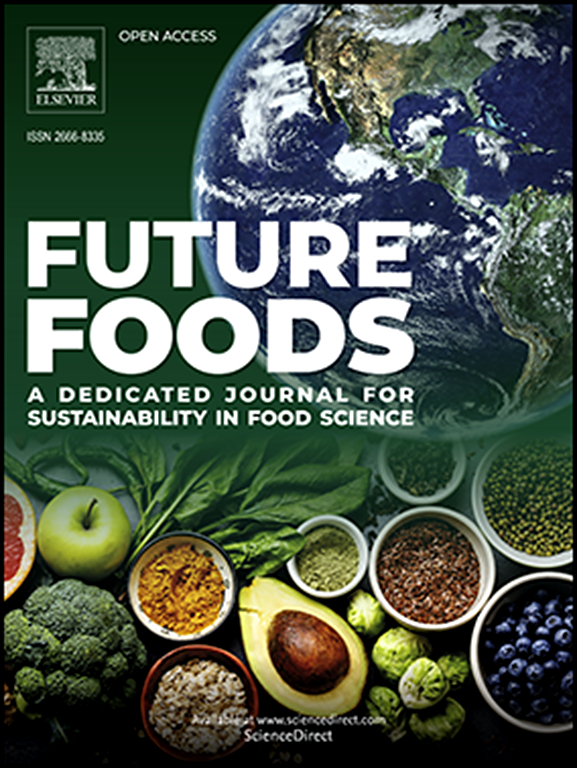3D-printed rice cake for dysphagia diet: Effect of rice flour/κ-carrageenan/curdlan complex gel on structure, swallowability, and storage
IF 7.2
Q1 FOOD SCIENCE & TECHNOLOGY
引用次数: 0
Abstract
Rice cakes are a traditional rice-based dessert consumed in Asian countries. They are an excellent source of carbohydrates and can be used as a staple food. However, they have a hard and gummy texture. This study aims to create dysphagia-friendly rice cakes by adding κ-carrageenan (KC) and curdlan (CD) to rice flour. Samples with various KC:CD ratios (1:1, 2:1, 3:1, and 4:1) were compared to commercial rice cakes. XRD showed typical A crystal structures that were unaffected by the complex gel. FTIR spectra indicated hydrogen bond interactions enhancing gel strength. Viscosity analysis revealed shear-thinning behavior for samples with KC:CD ratios of 1:1 and 2:1 suitable for bolus rheology. Optimized printing conditions yielded structurally stable 3D-printed rice cakes meeting the international standard for dysphagia (IDDSI levels 5 and 6). Compared to commercial rice cakes, the experimental samples exhibited lower syneresis and delayed retrogradation, suggesting improved storage stability. Complex gel incorporation offers a method for controlling structural property, swallowability, and storage stability, potentially enabling dysphagia-friendly rice cake manufacturing via 3D printing.

求助全文
约1分钟内获得全文
求助全文
来源期刊

Future Foods
Agricultural and Biological Sciences-Food Science
CiteScore
8.60
自引率
0.00%
发文量
97
审稿时长
15 weeks
期刊介绍:
Future Foods is a specialized journal that is dedicated to tackling the challenges posed by climate change and the need for sustainability in the realm of food production. The journal recognizes the imperative to transform current food manufacturing and consumption practices to meet the dietary needs of a burgeoning global population while simultaneously curbing environmental degradation.
The mission of Future Foods is to disseminate research that aligns with the goal of fostering the development of innovative technologies and alternative food sources to establish more sustainable food systems. The journal is committed to publishing high-quality, peer-reviewed articles that contribute to the advancement of sustainable food practices.
Abstracting and indexing:
Scopus
Directory of Open Access Journals (DOAJ)
Emerging Sources Citation Index (ESCI)
SCImago Journal Rank (SJR)
SNIP
 求助内容:
求助内容: 应助结果提醒方式:
应助结果提醒方式:


